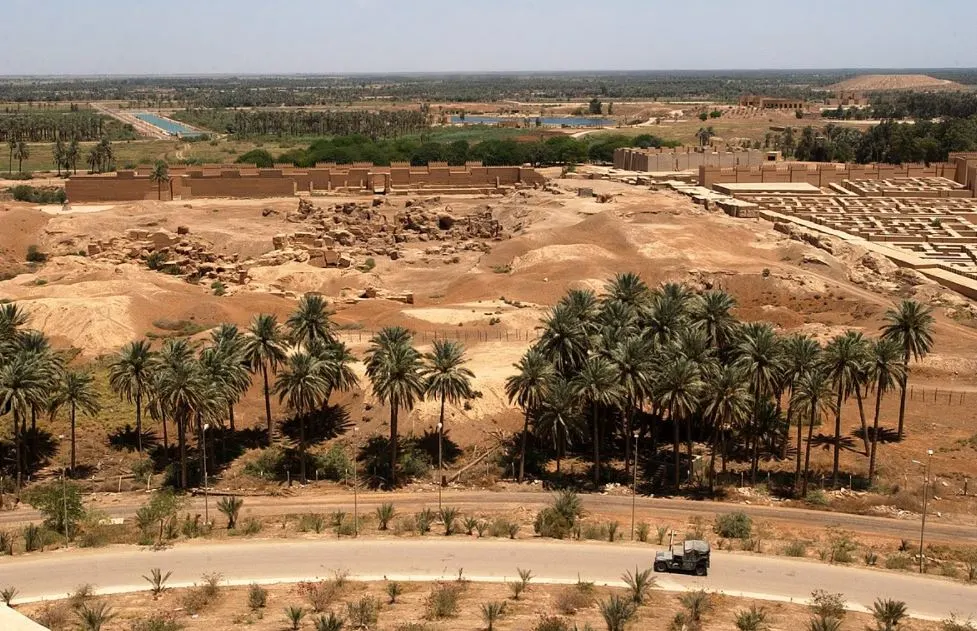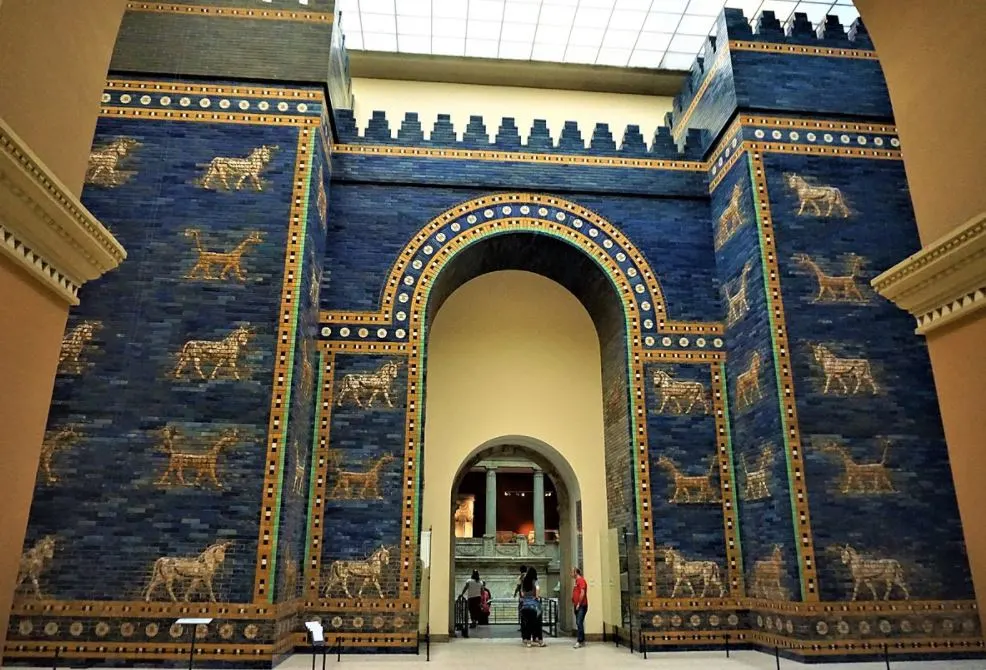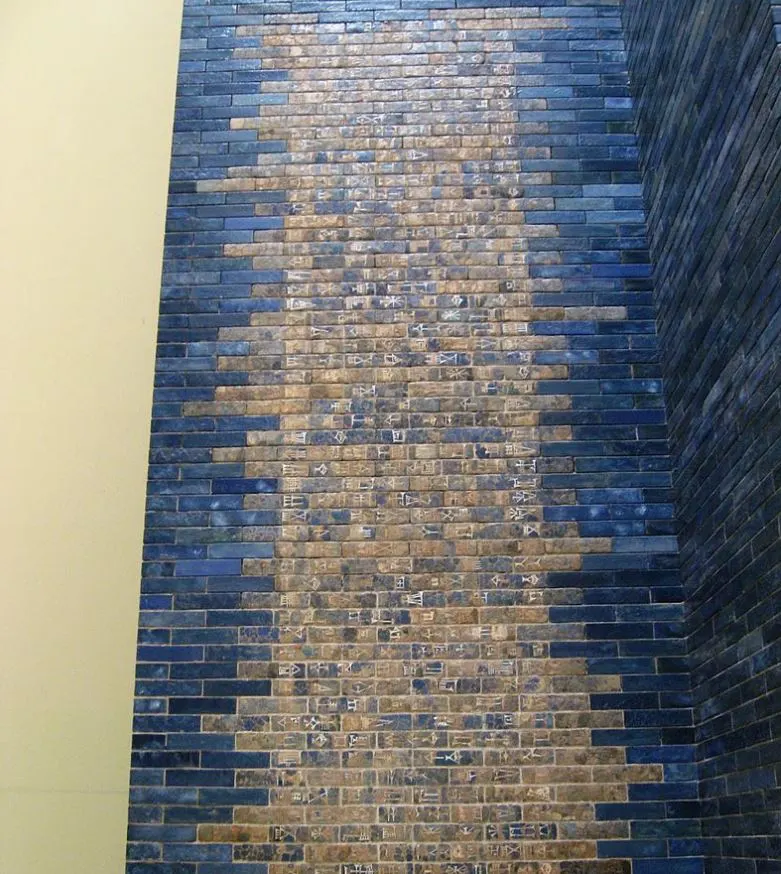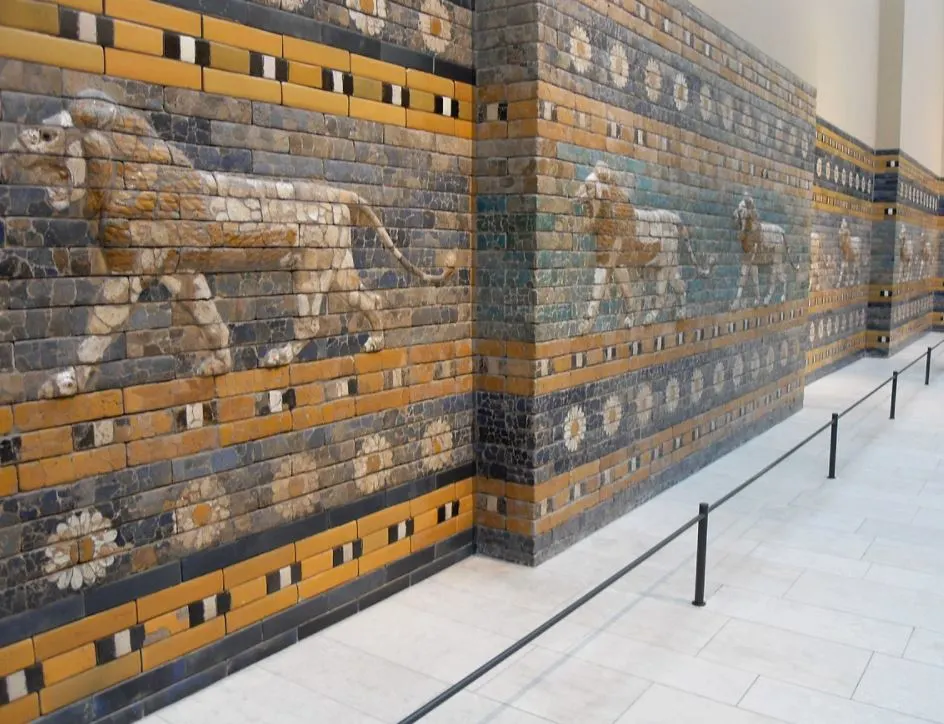The Babylonian Empire ruled over the area referred to as Mesopotamia in modern-day Iraq from the 19th until the 6th century B.C. Their capital was the intriguing city of Babylon, world-famous for presumably featuring one of the wonders of the ancient world, the so-called Hanging Gardens of Babylon.
This civilization was well advanced and the city of Babylon, which was located just south of modern-day Baghdad in Iraq, featured numerous fabulous Mesopotamian buildings and monuments.
In this article, we’re going to take a closer look at some of the most interesting facts about the Ishtar Gate, one of the remains which give us a glimpse into life in the ancient city of Babylon.
1. It was constructed in the 6th century B.C.
The city of Babylon was built on the banks of the Euphrates River and was first mentioned long before the Babylonian Empire was established. The city was featured on a clay tablet during the reign of Sargon of Akkad (2334–2279 B.C.) of the Akkadian Empire.
That’s almost 2 millennia before the Ishtar Gate was actually constructed, something that happened during the reign of King Nebuchadnezzar II who reigned between 604 and 562 B.C.
The gate was named in honor of a Babylonian deity named Ishtar, who was quite versatile as she was the goddess of love, beauty, sex, war, justice, and political power.

2. A replica is located in a famous museum in Berlin
The gate was first excavated in the 1930s by German archaeologists who were so astounded by what they found that they completely dismantled the ancient structure and brought it back to Berlin.
A replica of how the gate looked back in ancient times can now be found at Berlin’s Pergamon Museum, one of the famous museums located on Museum Island in the heart of the city.

3. The gate we see today is not the entire original gate
This wonderful gate reached a total height of 15.24 meters (50 feet) and was approximately 30 meters (100 feet) wide built on solid foundations that went up to 13.71 meters (45 feet) into the ground.

One of the most remarkable facts about the Ishtar Gate is that this isn’t even the entire ancient gate. The original structure was a complex of two major gates of which the one in Berlin is actually the smaller frontal section.
The second structure was the larger of the two gates and pretty much adjoined its smaller brother just behind it.

4. The gate was part of one of the main festivals in Babylon
Like any other civilization that has ever existed, there was a yearly party in Babylon that lasted up to 12 days. This religious festival marked the start of the harvest season and one of the man events was the New Year’s procession.
The so-called “Processional Way” ran north of the Ishtar Gate and had a length of up to 800 meters (2,624 feet) and a width of up to 20 meters at some points (66 feet). That’s quite the avenue!
This entire ceremonial road was enclosed with brick structures that were heavily decorated with reliefs. These decorations featured a total of 60 lions on both sides that represented the goddess Ishtar.

5. The gate was decorated with reliefs featuring gods and animals
Just as the buildings alongside the Processional Way, the gate itself was decorated with reliefs depicting 2 Babylonian deities taking on the form of the animals that represented them.
The chief god of Babylon was named “Marduk” and took on the shape of a dragon with a snake-like head. The second god was “Adad,” the storm and rain god in Babylon, who took on the form of an aurochs, a species of large wild cattle.
These reliefs were added to a background of glazed bricks which had a distinctive lively blue color. The reliefs were also made of bricks of which the clay was molded into the form of the animals.

More interesting facts about the Ishtar Gate
6. The Ishtar Gate was part of the Walls of Babylon and the 8th gate to the city. Because of its amazing design, it was originally one of the 7 wonders of the ancient world. It was replaced on that list starting in the 3rd century B.C. by the Lighthouse of Alexandria.
7. The remarkable blue color of the gate is probably a reference to another goddess named Inanna who was closely tied to the goddess Ishtar. The story about this deity mentions that she turned into lapis lazuli, a deep-blue color after being taken to the underworld.
8. The ancient city of Babylon not only featured a wall with enormous gates, but it was also home to various temples and palaces, all built with bricks. It’s estimated that about 15 million bricks were used to build all the structures in this fascinating ancient city.

9. An inscription was found on the Ishtar Gate written in Akkadian cuneiform script. This inscription was created at the same time as the establishment of the gate and, as you surely expected, glorifies both the gods and King Nebuchadnezzar. This inscription reads:
Nebuchadnezzar, King of Babylon, the pious prince appointed by the will of Marduk, the highest priestly prince, beloved of Nabu, of prudent deliberation, who has learnt to embrace wisdom, who fathomed Their (Marduk and Nabu) godly being and pays reverence to their Majesty, the untiring Governor, who always has at heart the care of the cult of Esagila and Ezida and is constantly concerned with the well being of Babylon and Borsippa, the wise, the humble, the caretaker of Esagila and Ezida, the first born son of Nabopolassar, the King of Babylon, am I.
Both gate entrances of the (city walls) Imgur-Ellil and Nemetti-Ellil following the filling of the street from Babylon had become increasingly lower. (Therefore,) I pulled down these gates and laid their foundations at the water table with asphalt and bricks and had them made of bricks with blue stone on which wonderful bulls and dragons were depicted. I covered their roofs by laying majestic cedars lengthwise over them. I fixed doors of cedar wood adorned with bronze at all the gate openings. I placed wild bulls and ferocious dragons in the gateways and thus adorned them with luxurious splendor so that Mankind might gaze on them in wonder.
I let the temple of Esiskursiskur, the highest festival house of Marduk, the lord of the gods, a place of joy and jubilation for the major and minor deities, be built firm like a mountain in the precinct of Babylon of asphalt and fired bricks.
Inscription on the gate.
10. This inscription is 15 meters (49.21 feet) tall, 10 meters (32.8 feet) wide, and features 60 lines of writing. A replica of this inscription can also be found at the Pergamon Museum in Berlin, even though it’s uncertain where exactly this inscription appeared.

11. The dismantling and reassembling of the Ishtar gate was one of the greatest archaeological achievements at that time in the 1930s. The bricks were carefully placed in 100’s of crates and brought to Berlin. Fragments of bricks were pieced together with newly baked bricks.
12. Even though a replica of the gate can be found at the Pergamon Museum in Berlin, segments of the ancient gate can be found in museums all around the world. These include:
- The Detroit Institute of Arts
- The Röhsska Museum in Gothenburg, Sweden
- The Louvre in Paris
- The State Museum of Egyptian Art in Munich
- The Kunsthistorisches Museum in Vienna
- The Royal Ontario Museum in Toronto,
- The Metropolitan Museum of Art in New York
- The Oriental Institute in Chicago
- The Rhode Island School of Design Museum
- The Museum of Fine Arts in Boston
- The Yale University Art Gallery in New Haven, Connecticut
- The Istanbul Archaeology Museums
- The Istanbul Ancient Orient Museum

